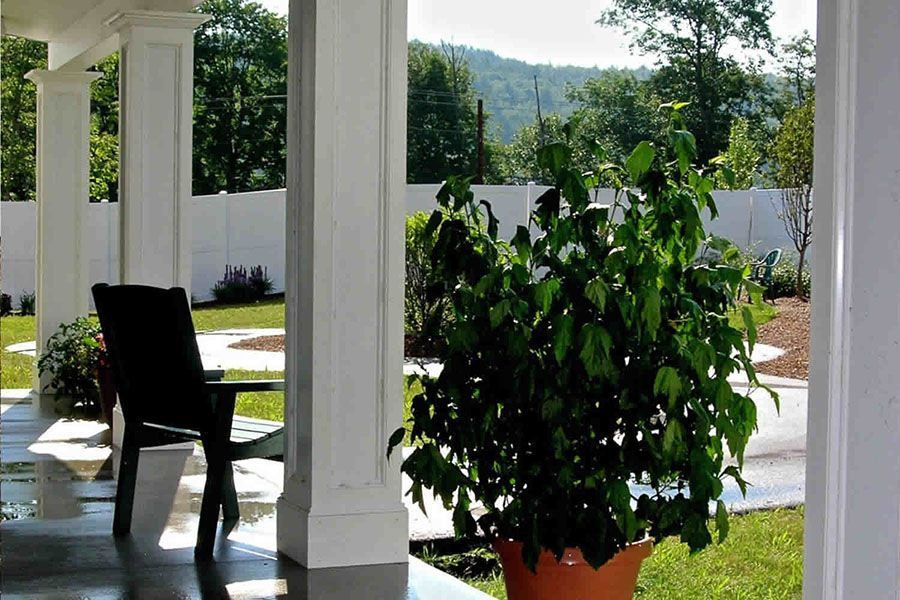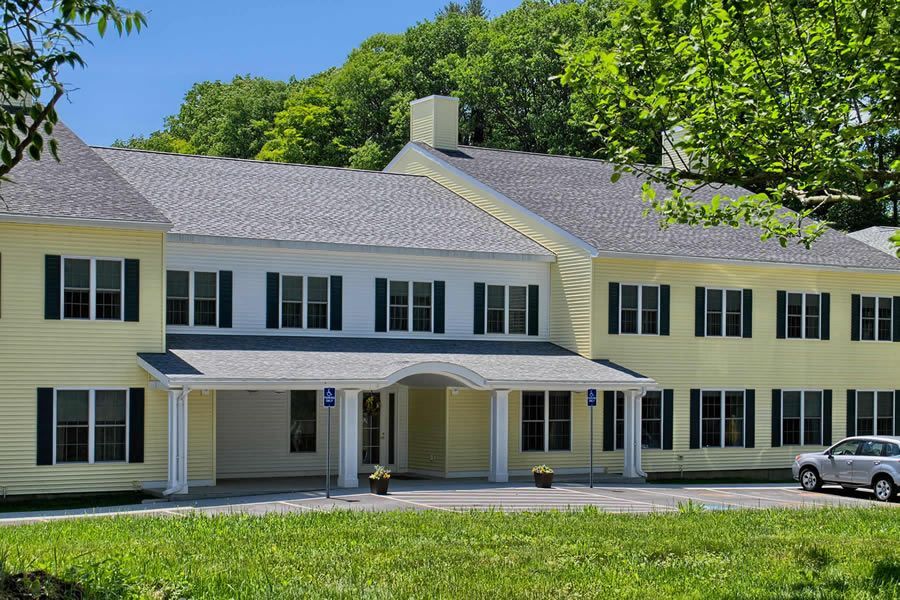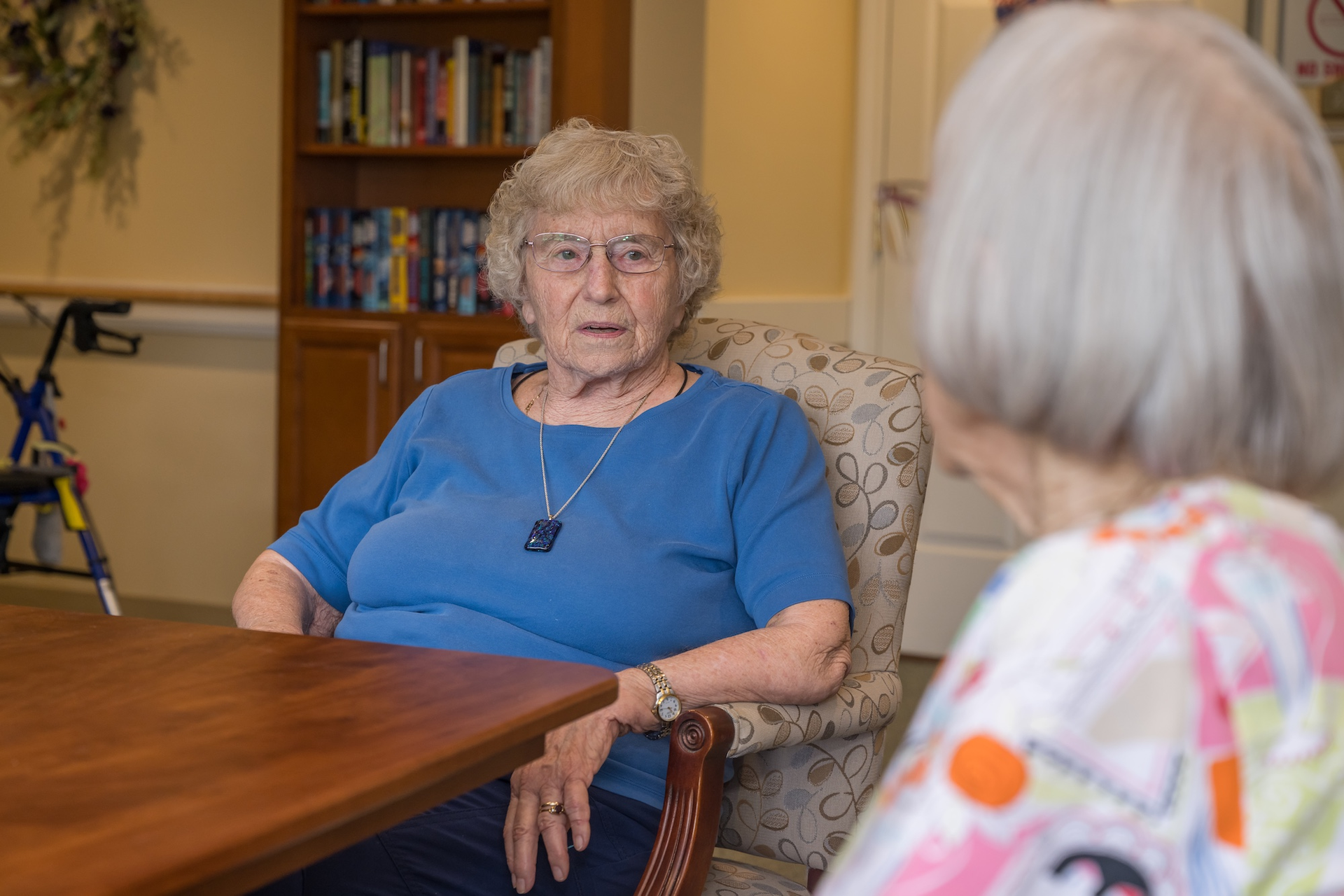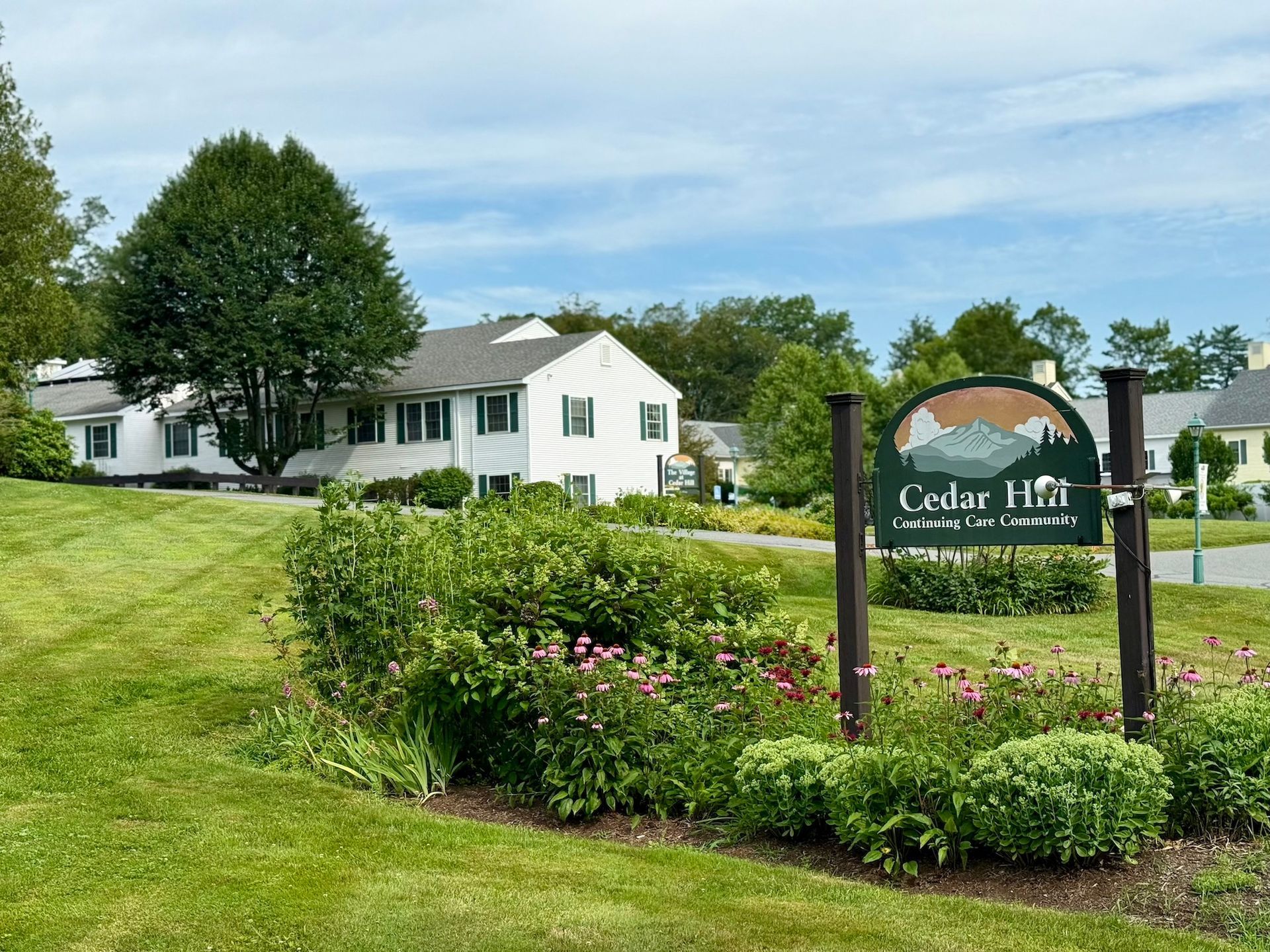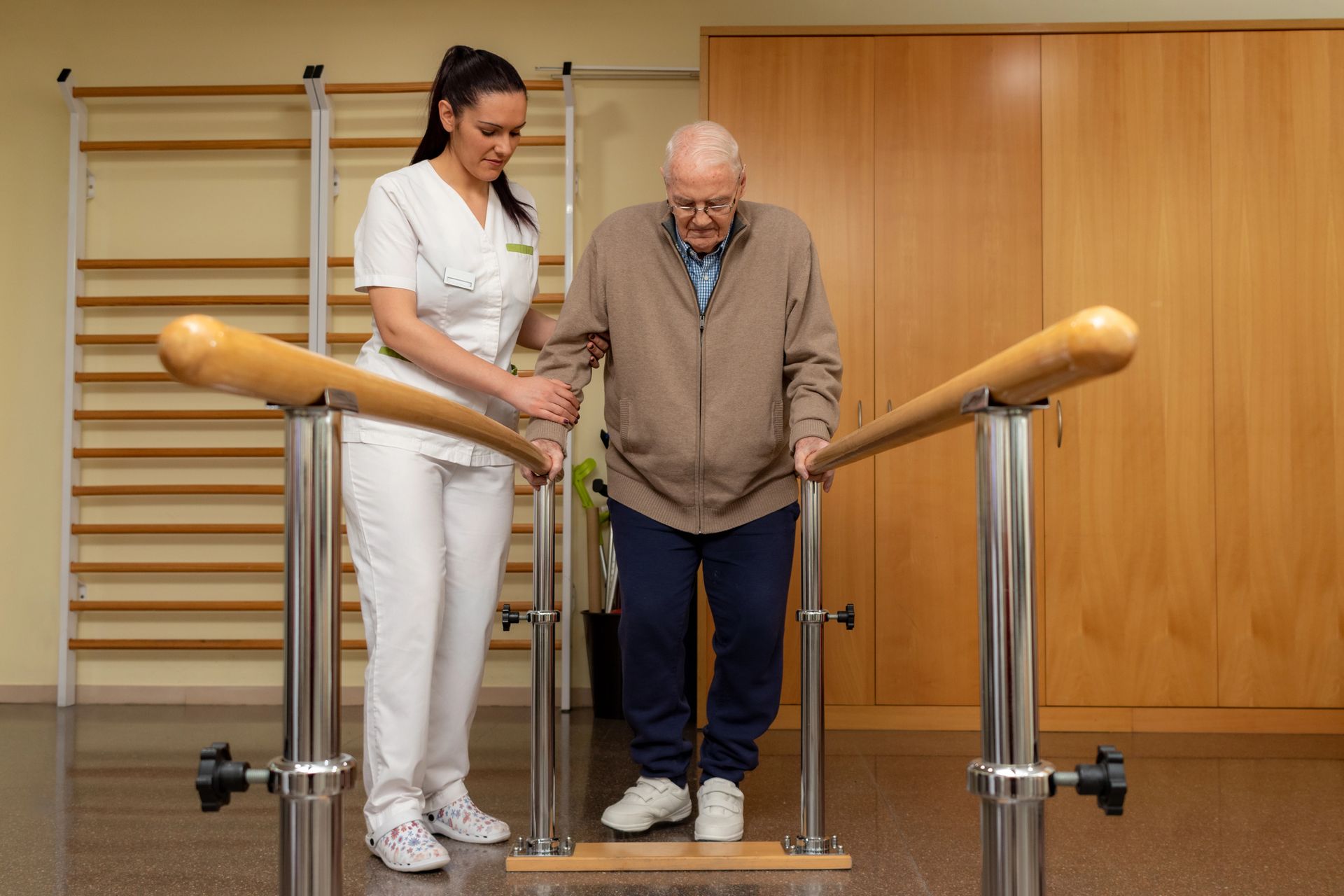Essential Questions to Ask for Assisted Living: Your Complete Guide
Choosing the right assisted living community for your loved one can feel overwhelming. With so many factors to consider and decisions to make, knowing the right questions to ask for assisted living can make all the difference in finding a place where your family member will truly thrive.
At Cedar Hill Continuing Care Community and the Village at Cedar Hill in Windsor, Vermont, we understand that families need comprehensive information to make an informed decision. That’s why we’ve created this complete guide to the essential questions every family should ask when evaluating assisted living facilities.
The questions you ask during your search will determine whether you find an assisted living facility that truly meets your loved one’s needs, or one that simply sounds good on paper. This guide covers everything from care services and safety measures to costs and family involvement, ensuring you have all the information needed to choose the right assisted living community.

Questions About Care Services and Support
Understanding the level and quality of care services is perhaps the most critical aspect of choosing an assisted living community. These questions will help you evaluate whether a facility can meet your loved one’s current and future needs.
What levels of care do you provide and how do you assess residents’ needs?
Assisted living communities typically offer multiple levels of care, from basic assistance with daily activities to more intensive support for complex health conditions. The assessment process should be thorough and ongoing, involving nurses, social workers, and care managers who evaluate medical conditions, cognitive function, mobility, and overall well-being.
At quality facilities, assessments occur before admission and are updated regularly—typically quarterly or whenever significant health changes occur. Ask how the community responds when a resident’s care needs change and whether they can provide additional services or offer hospice support.
What is your staff to resident ratio during day and night shifts?
Staffing levels directly impact care quality and resident safety. National benchmarks suggest an average ratio of 1 staff member to 15 residents during day shifts, with lower ratios at night. However, communities serving residents with higher care needs should maintain better ratios.
Ask specifically about how many staff members are scheduled for each shift, including nurses, care aides, and activity coordinators. Also inquire about night supervision and whether the facility exceeds state minimum requirements for staffing.
Do you have licensed nurses on-site 24/7 or on-call?
The availability of licensed nursing staff is essential for medication management, chronic disease management, and emergency response. Some assisted living facilities have registered nurses (RNs) or licensed practical nurses (LPNs) available around the clock, while others rely on on-call systems after hours.
Clarify whether the community guarantees 24/7 licensed nursing coverage or uses an on-call system, and understand how after-hours medical situations are managed. This is particularly important if your loved one has complex health care needs.
How do you create and update personalized care plans?
High-quality assisted living communities create individualized care plans collaboratively with residents, families, and clinical staff. These care plans should detail health conditions, personal preferences, and care goals, with regular reviews and updates.
Ask who coordinates the care plan development, how families are involved in the process, and under what circumstances plans are reviewed and updated. The best communities involve residents in their own care planning and respect their preferences and autonomy.
What assistance do you provide with activities of daily living?
Activities of daily living (ADLs) include bathing, dressing, toileting, eating, and mobility assistance. Understanding what’s included in the base monthly cost versus what requires additional fees is crucial for budgeting and care planning.
Ask which ADL services are included in the basic monthly fee, which require extra charges, and how staff monitor changes in residents’ abilities over time. Also inquire about the process for increasing support when a resident’s condition changes.
How do you handle residents with memory care or dementia needs?
Not all assisted living facilities are equipped to handle memory loss or dementia care. Some have specialized secure units with specially trained staff, therapeutic programs, and higher staffing ratios specifically for residents with cognitive impairments.
If your loved one has memory loss or you’re planning for future needs, ask about the facility’s approach to dementia care—whether they have dedicated units or provide integrated care, what specific training staff receive, what safety measures exist for residents who wander, and what evidence-based activities they offer for cognitive engagement.
What medical services are available on-site?
Many assisted living communities provide on-site medical services such as regular visits from primary care physicians, pharmacy services with medication reviews, physical therapy, and laboratory work. The availability and frequency of these services vary significantly between facilities.
Find out what medical services are available on-site, how often they’re provided, whether they’re included in the monthly cost or billed separately, and how residents access these services. Some communities have an in house physician, while others coordinate with local health care providers.
How do you handle medical emergencies and what are your response protocols?
Emergency response capabilities are critical for resident safety and family peace of mind. Quality facilities have staff trained in First Aid and CPR, detailed response protocols, and systems for rapid communication with families and emergency services.
Ask about the facility’s emergency response process, including who responds to emergencies, average response time, how residents can summon help (emergency call systems), and how often staff conduct safety drills to ensure readiness.
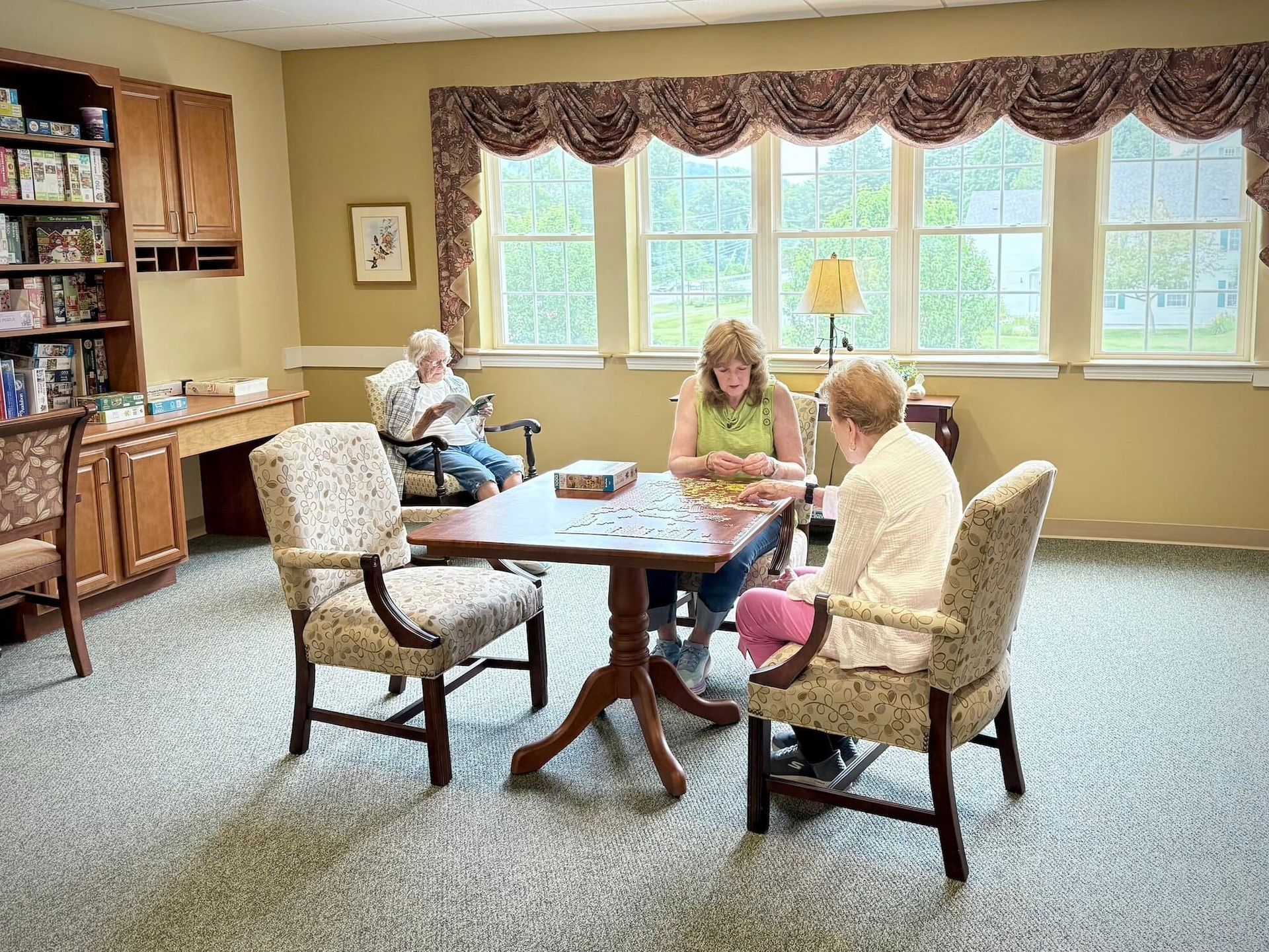
Staffing and Training Questions
The quality of care your loved one receives depends heavily on the staff members who provide it. These questions help you understand staff qualifications, training, and retention.
What training and certifications do your staff members have?
Quality assurance in assisted living requires that staff are properly certified and receive ongoing education. Basic requirements typically include state-mandated certifications, CPR and First Aid training, and medication management certification.
Ask whether the facility requires specialized certifications such as dementia care or palliative care training, what the minimum training hours are for new staff, and what ongoing professional development opportunities are provided. Staff trained in specific areas like memory care can significantly improve outcomes for residents with those needs.
How do you hire and screen caregivers and other staff?
Rigorous hiring processes protect residents and ensure quality care. This should include thorough background checks, criminal record screening, reference verification, and sometimes drug testing.
Inquire about the facility’s screening process, whether they check references beyond minimum requirements, and what ongoing monitoring systems they have in place. The safety and well-being of residents depends on having trustworthy, qualified staff members.
What is your staff turnover rate and average tenure?
Low staff turnover correlates with higher resident satisfaction and more consistent care. While national turnover rates in assisted living often exceed 30%, top facilities report significantly lower rates and can share average staff tenure.
Ask for the facility’s actual turnover rate, average tenure of current staff members, and what strategies they use for staff retention. High turnover can disrupt care continuity and resident relationships.
How do staff members get to know new residents during the transition period?
Smooth transitions into assisted living depend on staff understanding each new resident’s history, preferences, and needs. Quality facilities have orientation protocols and welcome programs that help staff build relationships with new residents.
Ask how staff members learn about new residents, whether there’s a designated point of contact or “buddy” system, and how the facility gathers information about residents’ life histories and preferences to personalize their care.
What departments do you have and how do they coordinate?
Well-organized communities have dedicated teams for nursing, social activities, maintenance, dining, and administration. Understanding the departmental structure helps you know who to contact for different needs.
Ask about the facility’s organizational structure and how different departments coordinate on issues that cross functional areas, such as incorporating dietary needs into care planning or coordinating maintenance for safety modifications.
How do you ensure consistent care when staff members are off duty?
Continuity of care requires strong communication systems, detailed shift notes, and robust handoff protocols between staff members. This ensures that care doesn’t suffer when individual staff members are off duty.
Inquire about how information is shared between shifts, what documentation systems are used, and how the facility maintains care consistency when regular staff members are absent or when new staff are working with residents.

Safety and Security Measures
Safety is a primary concern for families choosing assisted living. These questions help you understand how well a facility protects residents while maintaining their dignity and independence.
What security systems do you have in place?
Effective security and safety measures include controlled access entry systems, surveillance cameras (with clear privacy policies), comprehensive fire and smoke alarm systems, emergency generators, and monitoring systems for residents at risk of wandering.
Ask about all security systems in place, how they’re integrated and maintained, and what privacy protections exist for residents. Bathrooms and resident rooms should have grab bars, non-slip surfaces, and accessible emergency call systems.
Do residents have emergency call buttons in their rooms and bathrooms?
Every resident room and bathroom should have an emergency call system—whether buttons, pull-cords, or wearable pendants—that triggers immediate staff response. The reliability and response time of these systems can be life-saving.
Ask about the type of emergency call system used (wired, wireless, or both), whether there are backup systems, how often the systems are tested, and what the average response time is when residents use them.
How often do you conduct safety drills and what types?
Regular safety drills prepare both staff and residents for various emergency situations. Best practices include quarterly drills for fire, severe weather, and medical emergencies, with documentation of participation and compliance with safety standards.
Inquire about the frequency and types of regular safety drills, how residents participate, and whether the facility meets or exceeds state and national safety standards. Ask to see recent drill documentation if available.
What are your policies for residents who wander or have mobility issues?
Residents with dementia or cognitive impairment may be at risk for wandering, while others may have mobility challenges that require special accommodations. Quality facilities have policies that prioritize safety while maintaining resident dignity.
Ask how the facility manages residents at risk for elopement, what safety measures are in place (such as secured units or wearable tracking devices), and what accommodations exist for residents with limited mobility, including ramps, elevators, and safe walking paths.
How do you ensure medication safety and prevent medication errors?
Medication management is a critical safety issue in assisted living. Proper systems include Medication Administration Records (MARs), double-check protocols, and oversight by licensed nurses, with regular pharmacy reviews.
Ask about the facility’s medication management process, error prevention systems, staff training requirements, and how often medications are reviewed by pharmacists or physicians. Also inquire about error rates and how mistakes are handled when they occur.
What background checks do you perform on staff members?
Comprehensive background screening protects residents from potential harm and ensures that only qualified, trustworthy individuals provide care. State regulations typically require criminal background checks, but practices vary.
Ask about the facility’s background check policy, how frequently checks are updated, and whether they exceed minimum state requirements. This is particularly important given the vulnerable nature of the population being served.
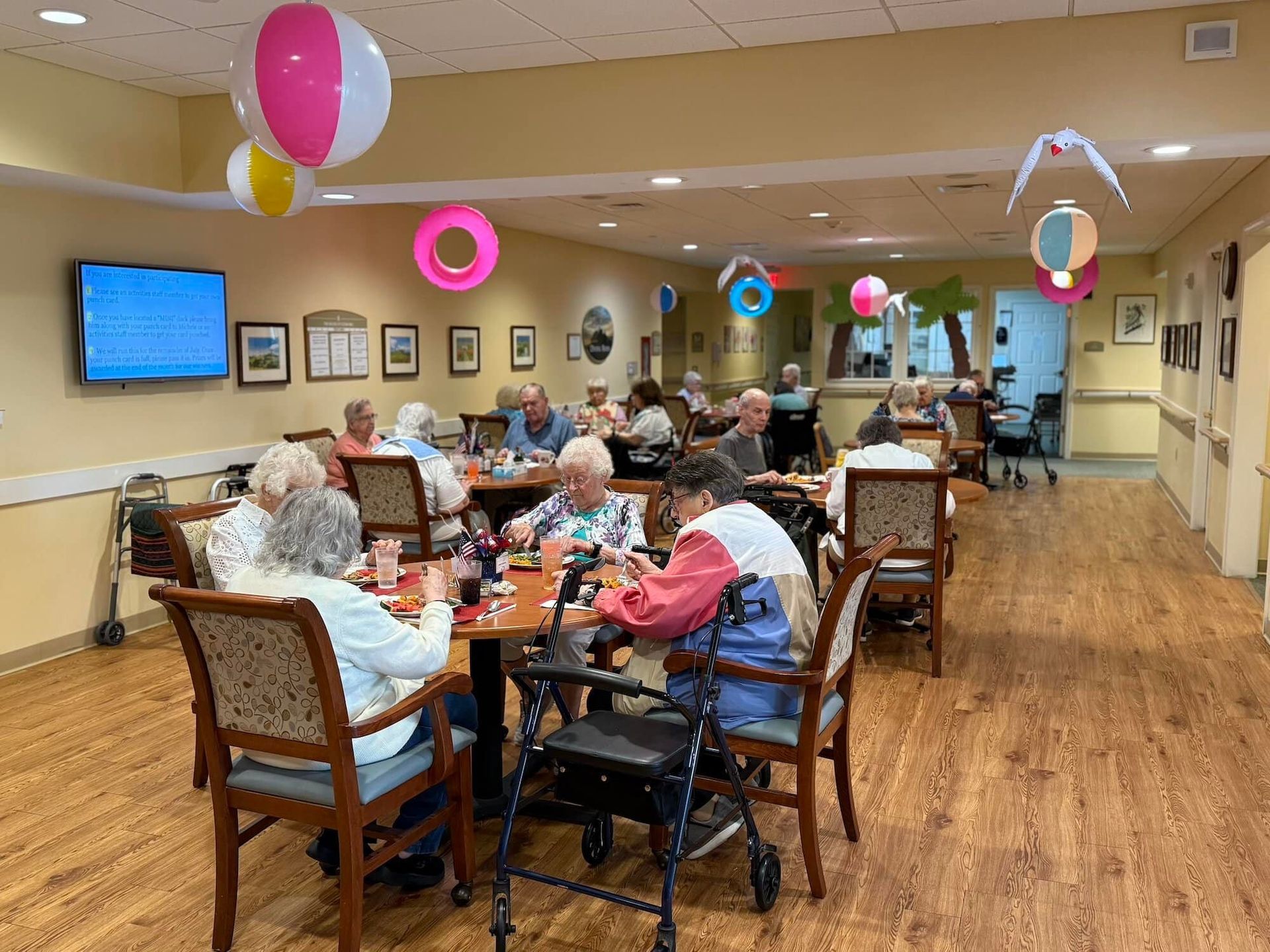
Dining and Nutrition Questions
Nutrition and dining experiences significantly impact quality of life in assisted living. These questions help you understand how well a facility meets dietary needs and preferences.
How many meals per day are included and what are the dining hours?
Most assisted living communities include three meals per day in their base cost, but dining hours and flexibility vary. Meal times should accommodate resident preferences, not just staff convenience.
Ask about specific meal times, flexibility for residents who prefer different schedules, and how late meals or snacks are handled. Some communities offer continental breakfast, while others provide full breakfast service.
Can you accommodate special diets and dietary restrictions?
Quality facilities should accommodate diabetic, low-sodium, vegetarian, and other specialized diets, as well as food allergies and personal preferences. The best communities have registered dietitians who oversee menu planning and dietary accommodations.
Ask about the facility’s capacity for custom diets, how they handle food allergies, and whether they have dietetic professionals on staff or as consultants. Also inquire about how dietary needs are incorporated into individual care plans.
Do you have a registered dietitian on staff?
Access to a licensed dietitian ensures that meal plans meet both nutritional and medical standards. Some facilities have dietitians on staff full-time, while others use consultant dietitians who visit regularly.
Ask about the facility’s arrangement with dietary professionals, how often residents receive nutritional assessments, and how dietitians contribute to menu planning and individual dietary needs.
Can family members join residents for meals and what is the cost?
Family involvement in dining supports social wellness and helps families stay connected with their loved one’s daily life. Top communities welcome family participation with reasonable policies and pricing.
Ask about guest meal policies, associated costs, advance notice requirements, and whether private or family dining rooms are available for special occasions.
Where are meals served and what are the dining options?
Dining venues can range from single communal dining rooms to multiple restaurants or cafes, with some facilities offering in-room dining service. Variety in dining areas supports different preferences and needs.
Ask about available dining locations, whether in-room service is available (and at what cost), and how the facility accommodates residents with different mobility or socialization preferences.
How do you handle residents who need assistance with eating?
Some residents require assistance with eating due to physical limitations or cognitive challenges. Staff should be trained to provide dignified assistance while encouraging independence and minimizing safety risks.
Ask about staff training for dining assistance, how they balance independence with safety, and what protocols exist to prevent choking or other dining-related incidents.
Are snacks available between meals?
Access to snacks between meals is important for residents with erratic appetites or those who prefer smaller, more frequent meals. This is particularly important for residents with diabetes or other conditions affecting eating patterns.
Ask about snack availability, whether there are designated snack areas or pantries, scheduled snack times, and how the facility supports residents who need frequent small meals.

Activities and Social Engagement
Active social engagement and meaningful activities are essential for residents’ well-being and quality of life. These questions help you understand how well a facility promotes active, engaged living.
What types of activities do you offer?
A comprehensive activity program should include physical activities (exercise classes, yoga), social activities (clubs, games), intellectual activities (lectures, book clubs), and spiritual activities (religious services, meditation). Variety ensures that different interests and abilities are accommodated.
Ask for sample monthly activity calendars, information about participation rates, and how the facility gathers resident feedback about programming. The activity calendar should reflect the interests and abilities of the current resident population.
Do you provide a monthly activity calendar and how is it planned?
Activity planning should involve resident input, multidisciplinary team collaboration, and regular evaluation of program effectiveness. The best facilities publish detailed monthly calendars and actively seek resident suggestions.
Ask how residents can contribute to activity planning, who coordinates the program, and how often programming is evaluated and updated based on resident feedback and participation.
Can residents suggest activities or participate in planning?
Resident-driven programming promotes autonomy and ensures that activities reflect actual interests rather than assumptions. Empowering residents to suggest or lead activities fosters a sense of community ownership.
Ask for examples of resident-led or resident-suggested activities, what support the facility provides for new program initiatives, and how residents can get involved in activity planning and leadership.
Do you offer transportation services for outings and appointments?
Transportation services enable residents to maintain independence and community connections. Services may include scheduled outings, medical appointment transportation, and shopping trips.
Ask about transportation policies, vehicle accessibility for wheelchairs and mobility aids, associated fees, and availability for both scheduled and unscheduled trips. Also inquire about doctor appointments and shopping transportation.
What fitness and wellness programs are available?
Physical wellness programming should accommodate different ability levels and interests, from simple chair exercises to more complex fitness classes and gym equipment. Programs should be designed with senior safety and capabilities in mind.
Ask about available fitness classes, equipment, staffing qualifications for fitness programming, and how programs are adapted for residents with different physical abilities and limitations.
How do you encourage social interaction among residents?
Intentional programming and environmental design can significantly reduce social isolation. Effective strategies include welcome committees, social hours, small group activities, and common spaces that encourage interaction.
Ask about specific strategies for promoting social interaction, how new residents are integrated into the community, and what measures are taken to prevent or address social isolation among current residents.
Are there opportunities for residents to continue hobbies or learn new skills?
Supporting existing hobbies and providing opportunities for skill development enhances quality of life and personal fulfillment. This might include craft rooms, workshops, classes, or clubs focused on specific interests.
Ask for examples of hobby support, learning opportunities, and how the facility accommodates residents who want to maintain or develop new interests. Some communities offer lifelong learning programs or partnerships with local educational institutions.
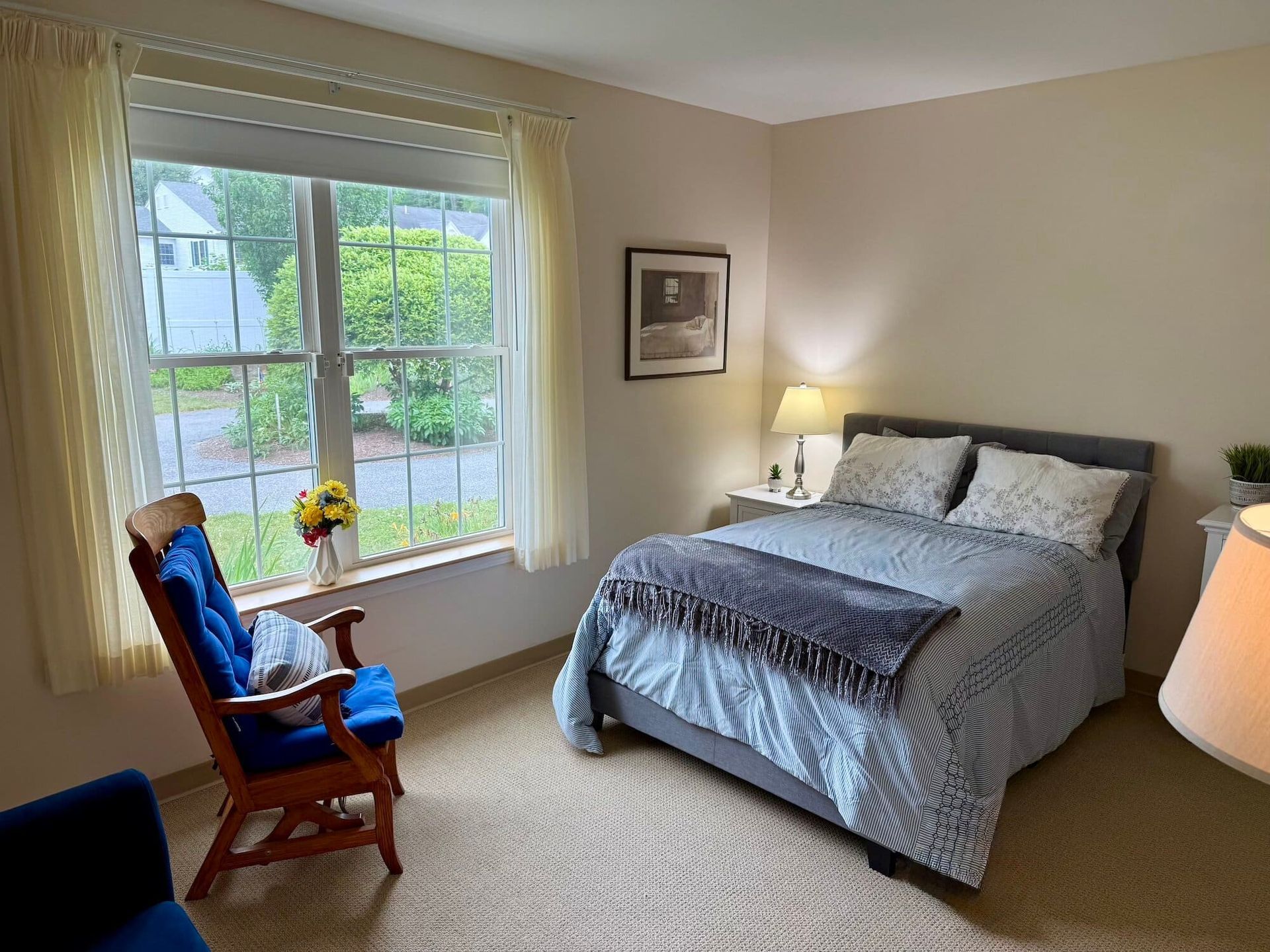
Living Arrangements and Accommodations
Understanding housing options and policies helps ensure your loved one will be comfortable and able to maintain their preferred lifestyle.
What room sizes and layouts are available?
Assisted living communities typically offer various options including studio apartments, one-bedroom units, and sometimes two-bedroom accommodations. Square footage, layout efficiency, and storage space vary significantly between facilities.
Ask for detailed descriptions of available room types, floor plans if possible, and opportunities to view different layout options during your tour. Consider your loved one’s furniture and space preferences when evaluating options.
Can residents bring their own furniture and personal belongings?
Most quality facilities encourage residents to bring personal furniture, decorations, and meaningful items to help their new space feel like home. However, some restrictions may apply for safety or space reasons.
Ask about policies regarding personal belongings, any restrictions on furniture types or sizes, and how the facility supports residents in personalizing their living spaces while maintaining safety standards.
Are rooms private or shared, and what are the options?
While private rooms offer independence and privacy, they typically cost more than shared accommodations. Shared rooms can provide companionship but may create compatibility challenges.
Ask about availability of both private and shared options, cost differences, and if shared rooms are available, what process is used for roommate matching and what happens if compatibility issues arise.
What modifications can be made for accessibility needs?
Living spaces should accommodate wheelchair accessibility, and many facilities can make additional modifications to meet individual needs. Standard features should include bathroom grab bars and accessible layouts.
Ask what accessibility features are standard in all units, what additional modifications are possible, associated costs for customizations, and how quickly modifications can be implemented when needs change.
Do you allow pets and what is your pet policy?
Pet-friendly assisted living facilities may allow small dogs, cats, or other pets with specific guidelines regarding care, liability, breed restrictions, and associated fees.
Ask about the facility’s pet policy, any fees involved, size or breed restrictions, requirements for pet care, and what support is available if a resident can no longer care for their pet.
How is housekeeping and laundry handled?
Most assisted living communities include basic housekeeping and laundry services in their standard fees, but frequency and scope of services vary between facilities.
Ask about housekeeping frequency and scope, laundry service details (personal laundry vs. linens), any additional costs for extra services, and what cleaning supplies or equipment residents need to provide.
What utilities and services are included in the room cost?
Base fees typically include basic utilities like electricity, water, heat, and sometimes cable television or internet access. Understanding what’s included helps with budgeting and comparison shopping.
Ask for a detailed list of included utilities and services, what residents are responsible for paying separately, and how maintenance and repair requests are handled.

Costs and Financial Information
Understanding all costs involved in assisted living is crucial for financial planning and avoiding surprises. These questions ensure pricing transparency.
What is the monthly base rate and what services does it include?
Base rates should include housing, meals, basic care services, and activities, but the specific inclusions vary significantly between facilities. Understanding exactly what’s covered helps you compare true costs between communities.
Ask for a comprehensive breakdown of services included in the base rate and what additional services might trigger extra charges. Also inquire about how care levels affect pricing and what circumstances might lead to cost increases.
How much do additional services cost?
Services like incontinence care, specialized diets, advanced medication management, or one-on-one assistance are often billed separately. These à la carte charges can add hundreds or thousands of dollars to monthly costs.
Ask for a detailed fee schedule for additional services, how often costs are reviewed and potentially increased, and what triggers the need for additional services that would affect your monthly cost.
Do you offer all-inclusive pricing or à la carte billing?
Some facilities offer predictable all-inclusive pricing, while others use tiered or usage-based billing. Each model has advantages depending on your loved one’s needs and your preference for budget predictability.
Ask about the facility’s pricing model, billing transparency, and request to see sample invoices so you understand exactly how charges are calculated and presented.
What payment methods do you accept and when is payment due?
Most assisted living communities accept checks and electronic transfers, and some work with long-term care insurance or Medicaid programs. Payment timing and deposit requirements vary.
Ask about accepted payment methods, payment due dates, any advance payment requirements or deposits, and what happens if payments are late or if financial circumstances change.
How much notice is required if care needs change and costs increase?
When residents’ care needs increase, costs often increase as well. Quality facilities provide adequate notice before implementing cost changes and clear explanations of why increases are necessary.
Ask about the facility’s policy for notifying residents and families about cost changes, minimum notice periods, and whether there’s an appeal process if you disagree with proposed changes.
Do you accept long-term care insurance or Medicaid?
Long-term care insurance can help offset costs, and some facilities participate in Medicaid waiver programs, though Medicaid coverage for assisted living is limited in many states including Vermont.
Ask about insurance partnerships, Medicaid waiver program participation, what documentation is required for insurance claims, and eligibility requirements for any financial assistance programs.
Are there any additional fees for activities, transportation, or amenities?
Some facilities charge separately for certain activities, transportation services, or premium amenities. Understanding all potential charges helps avoid billing surprises.
Ask for a complete list of potential additional fees, including activity participation costs, transportation charges, guest meal fees, and any other services that might result in extra charges.

Family Involvement and Communication
Strong family relationships and communication enhance residents’ well-being and provide peace of mind for loved ones.
What are your visiting hours and policies for family members?
Family involvement is crucial for resident well-being, so facilities should offer flexible visiting policies that accommodate different schedules and needs. Post-pandemic, some communities have revised policies for infection control.
Ask about visiting hours, overnight stay policies, guest meal arrangements, and any restrictions that might affect your ability to stay connected with your family member.
How do you communicate with families about residents’ care and well-being?
Regular communication keeps families informed about their loved one’s health, activities, and any changes in condition. The best facilities provide multiple communication channels and proactive updates.
Ask about communication methods (phone, email, online portals), frequency of updates, who serves as the primary contact person, and how urgent matters are communicated to families.
Can family members participate in care plan meetings?
Family involvement in care planning supports transparency and ensures that care reflects the resident’s values and preferences. Families should be invited to participate in planning and review sessions.
Ask about the facility’s approach to family involvement in care planning, how often meetings occur, how family input is incorporated, and what happens if families disagree with proposed care approaches.
Do you have family events or opportunities for family involvement?
Family events and engagement opportunities strengthen community bonds and help families feel connected to their loved one’s new home. These might include holiday celebrations, educational seminars, or volunteer opportunities.
Ask about annual family events, ongoing volunteer opportunities, educational programs for families, and how families can get involved in community activities and governance.
How do you handle family concerns or complaints?
All facilities should have formal processes for addressing concerns and complaints, with clear timelines and escalation procedures. Responsive complaint handling demonstrates commitment to continuous improvement.
Ask about the complaint and grievance process, average response and resolution times, escalation procedures, and examples of how feedback has led to positive changes in the community.
Can families access online portals or apps to stay updated?
Technology can enhance family communication through secure online portals or smartphone apps that provide access to care notes, event calendars, billing information, and direct communication with staff.
Ask about available technology platforms, what information is accessible through online systems, privacy protections, and how families can get support using these systems.
Resident Rights and Quality of Life
Protecting resident rights and promoting quality of life should be fundamental priorities for any assisted living community.
Do you have a Resident Council or similar resident advocacy group?
Resident councils empower residents to influence facility policies, programming, and operations. Active resident advocacy demonstrates the facility’s commitment to resident autonomy and satisfaction.
Ask whether the facility has a resident council, how often it meets, what topics are typically addressed, and how recommendations from the council are implemented.
How much input do residents have in their daily schedules and care decisions?
Residents should maintain as much control as possible over their daily routines, from wake-up times to activity participation. Respecting resident preferences supports dignity and autonomy.
Ask how resident preferences are incorporated into daily schedules, what choices residents have regarding their care, and how the facility balances resident autonomy with safety requirements.
What is your policy on resident privacy and dignity?
Strong privacy policies protect residents’ rights while promoting appropriate social engagement. This includes privacy in personal care, medical information, and personal communications.
Ask about privacy training for staff, physical design features that support privacy, how medical information is protected, and how privacy rights are balanced with safety and care requirements.
How do you handle conflicts between residents?
Living in close proximity can sometimes lead to conflicts between residents. Quality facilities have systems for mediation and conflict resolution that respect all parties involved.
Ask about the facility’s approach to conflict resolution, whether trained mediators are available, how families are involved when conflicts arise, and what measures are taken to prevent recurring issues.
What measures do you take to prevent social isolation?
Social isolation can significantly impact physical and mental health. Effective facilities have specific strategies for identifying and addressing isolation, including wellness checks and targeted programming.
Ask about isolation prevention strategies, how staff identify residents at risk for loneliness, what interventions are available, and how the facility measures social engagement among residents.
How do you track and measure resident satisfaction?
Quality communities regularly measure resident satisfaction through surveys, focus groups, and other feedback mechanisms, using this data to drive continuous improvement.
Ask about satisfaction measurement methods, recent survey results, how feedback is used to make improvements, and whether satisfaction data is shared with residents and families.

References and Community Reputation
Understanding a facility’s reputation and track record helps you make a more informed decision about quality and reliability.
Can you provide references from current residents and their families?
Speaking with current residents and families provides unfiltered insights into the actual living experience at the facility. Quality communities should be willing to arrange these conversations (with privacy permissions).
Ask for references from residents and families who have similar care needs or backgrounds to your loved one, and inquire about both positive experiences and any challenges they’ve encountered.
What are your state inspection results and how can I review them?
State inspection reports are public records that provide objective information about regulatory compliance, violations, and corrective actions. Recent inspection results should be readily available.
Ask for the most recent inspection reports, information about any violations and how they were corrected, and where you can access inspection history online.
How long has this facility been operating under current management?
Stable management often correlates with higher quality and consistency of care. Long-term leadership typically indicates effective operations and resident satisfaction.
Ask about the tenure of current management and administration, leadership philosophy, and any recent changes in ownership or management structure.
Are you accredited by any national organizations?
National accreditation from organizations like the Joint Commission or CARF indicates voluntary compliance with higher standards beyond state requirements.
Ask about all current accreditations, what standards these organizations require, when accreditation was last renewed, and any awards or recognition the facility has received.
Can I speak with current residents during my tour?
Interactions with current residents during tours provide valuable insights into resident satisfaction and the actual living experience. Quality facilities encourage these conversations.
Ask whether you can speak with residents during your tour, what questions you might ask them, and whether there are opportunities to observe daily life and activities during your visit.
What awards or recognition has your community received?
Industry awards and local recognition can indicate superior performance and community reputation. These might include “Best Assisted Living” awards or safety innovation recognition.
Ask about recent awards or recognition, what criteria were used for selection, and how the facility’s performance compares to other senior living communities in the area.

Making Your Decision
Armed with answers to these comprehensive questions, you’re ready to evaluate your options and make an informed decision about your loved one’s care.
Tips for Evaluating Answers and Comparing Facilities
Create a standardized checklist to compare responses across different communities you’re considering. Pay attention not just to what facilities say they offer, but how specific and detailed their answers are. Vague responses or reluctance to provide specific information can be red flags.
Consider visiting each facility multiple times at different hours and days of the week to get a complete picture of daily operations. Take notes during each visit and ask follow-up questions to clarify anything that wasn’t clear during your initial tour.
Importance of Touring Multiple Communities
Industry best practices recommend touring at least three assisted living facilities to gain perspective on different approaches to care and community life. This comparison shopping helps you identify what’s most important for your loved one and recognize exceptional service when you see it.
During tours, observe how staff interact with current residents, the cleanliness and maintenance of the facility, and whether residents appear engaged and content. These observations can be as important as the formal answers to your questions.
Involving Your Loved One in the Decision-Making Process
Successful transitions to assisted living require the resident’s participation and buy-in. Include your loved one in facility tours when possible, discuss their preferences and concerns, and ensure their voice is heard in the final decision.
Consider your loved one’s lifestyle preferences, social needs, and care requirements when evaluating options. The best assisted living community is one that aligns with their values and supports their desired quality of life.
What to Do if You Need Additional Information
Don’t hesitate to schedule follow-up visits or request additional information. Quality facilities welcome questions and provide detailed information to help families make informed decisions.
Ask for written policies, sample menus, activity calendars, and care plan templates. Request time to speak with the nursing director, activities coordinator, or other key staff members who would be involved in your loved one’s care.
Red Flags to Watch For
Be cautious of facilities with high staff turnover, lack of transparency about staffing ratios or qualifications, frequent regulatory violations, poor cleanliness or maintenance, or restrictions on your access to residents and information.
Other warning signs include pressure to make immediate decisions, unwillingness to provide references, evasive answers about costs or care policies, and negative feedback from current residents or families.
Timeline Considerations
The assisted living admissions process can take anywhere from a few days to several weeks, depending on the facility’s availability and the complexity of your loved one’s needs. Consider urgency factors, timing of transitions, and moving logistics when planning your timeline.
Start your search early if possible, as this allows time for thorough evaluation and reduces the stress of making rushed decisions during crisis situations.
At Cedar Hill Continuing Care Community and the Village at Cedar Hill, we believe that informed families make the best decisions for their loved ones. We encourage you to ask all of these questions during your visit with us and any other senior living communities you’re considering.
Our team is committed to providing transparent, detailed answers to help you understand exactly how we can support your family member’s health, happiness, and quality of life. We invite you to schedule a personalized tour where you can see our community in action, meet our staff members, and experience the warm, welcoming environment that makes Cedar Hill a special place to call home.
Ready to get started? Contact our care advisors today to schedule your visit and begin exploring how Cedar Hill can provide the exceptional care and vibrant community your loved one deserves.
